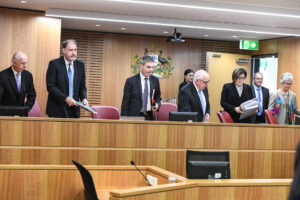The Budget shows the big hole in Real Wages
The Government acknowledges the need to get wages growing again, but the budget reveals just how big the task is
The first Albanese Government Budget made a great store in the need to get wages growing again. Treasurer Jim Chalmers in his Budget Speech noted that “if there’s one fact that sums up nearly a decade of wasted opportunities and warped priorities, it is this: real wages are lower today than they were 10 years ago.”
That remains a searing indictment not just on the past 10 years but also on the decades of changes to the industrial relations system that have continually reduced the power of workers and supported the push from companies for lower wage growth.
The pandemic and the spike in prices in the past year have revealed the true cost of this regime.
Real wages have plummeted to some 3% below where they were in the middle of 2019 and they are set to fall to more than 5% below by June next year.
While the Budget expects real wages to begin rising in 2023-24, the path to undo the damage will be long and tough for workers.
Even with some relatively optimistic predictions for wages and inflation growth in the budget, by June 2026 real wages will still be 3.2% below pre-pandemic levels. by then they will only be back to the level they were in 2011.
Fortunately, the Budget and the coming industrial relations legislation see a government acknowledging that more needs to be done than just hoping the market will deliver better wages if unemployment falls.
The changes to multi-employer bargaining, the raising of the bar that employers need to clear in order to terminate enterprise agreements during bargaining periods, and better support for raising the minimum wage are all signs that after a decade there is a government that is ready to face up to the problem of wages growth.
But the hole we are in is deep and it will take many years to get out of it.
Related research
Between the Lines Newsletter
The biggest stories and the best analysis from the team at the Australia Institute, delivered to your inbox every fortnight.
You might also like
The Wage Price Index shows pay packets are up. So why doesn’t it feel that way?
The latest figures from the Australian Bureau of Statistics show wages are growing at a reasonable rate, but a deeper look shows a big problem might be about to bite Australian workers.
If business groups had their way, workers on the minimum wage would now be $160 a week worse off
Had the Fair Work Commission taken the advice of business groups, Australia lowest paid would now earn $160 less a week.
The continuing irrelevance of minimum wages to future inflation
Minimum and award wages should grow by 5 to 9 per cent this year



